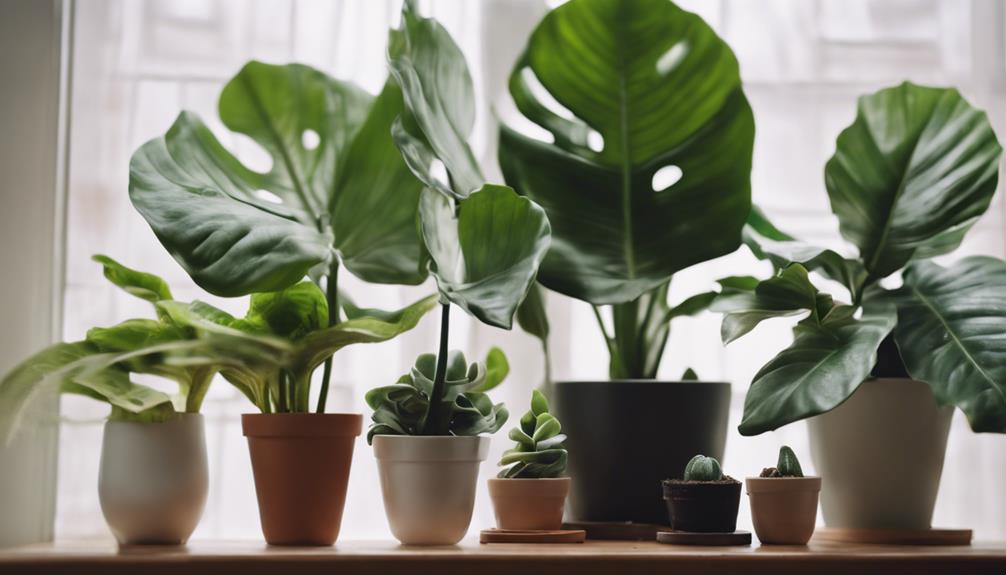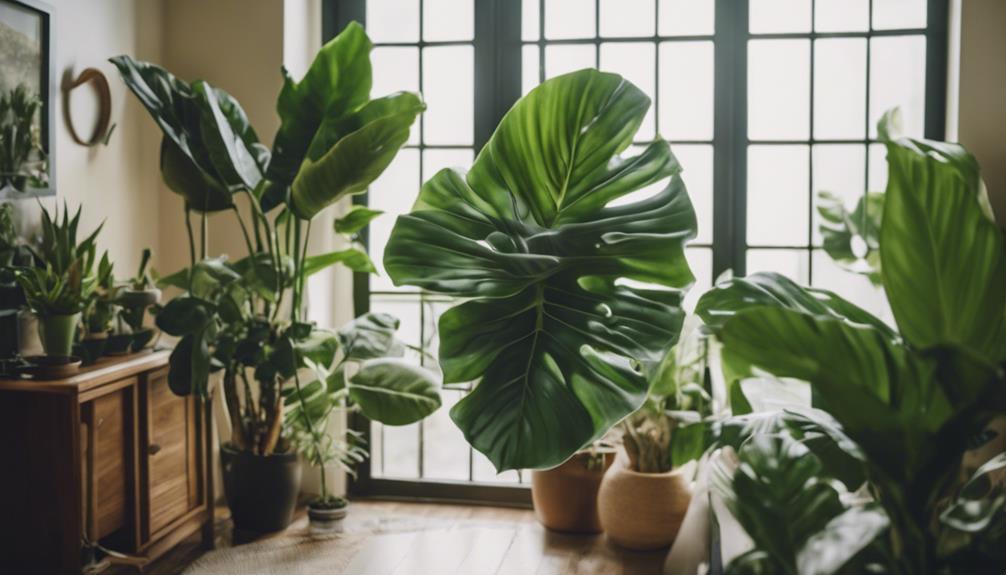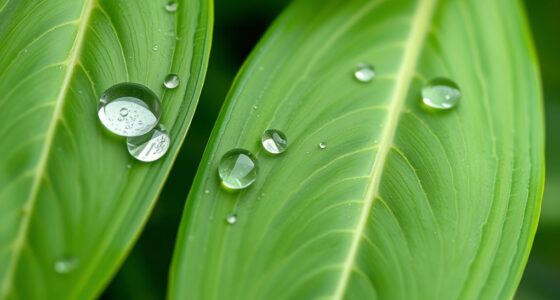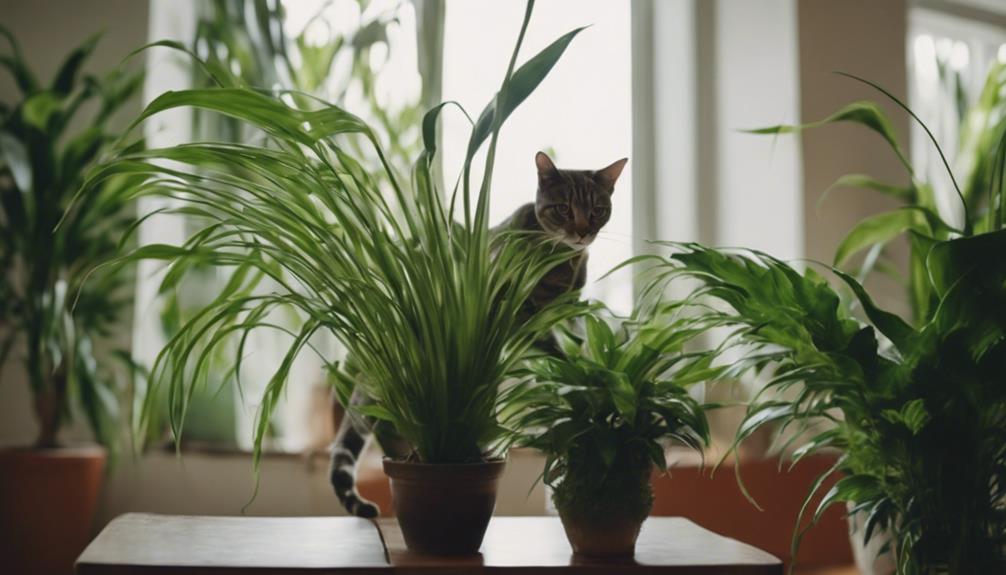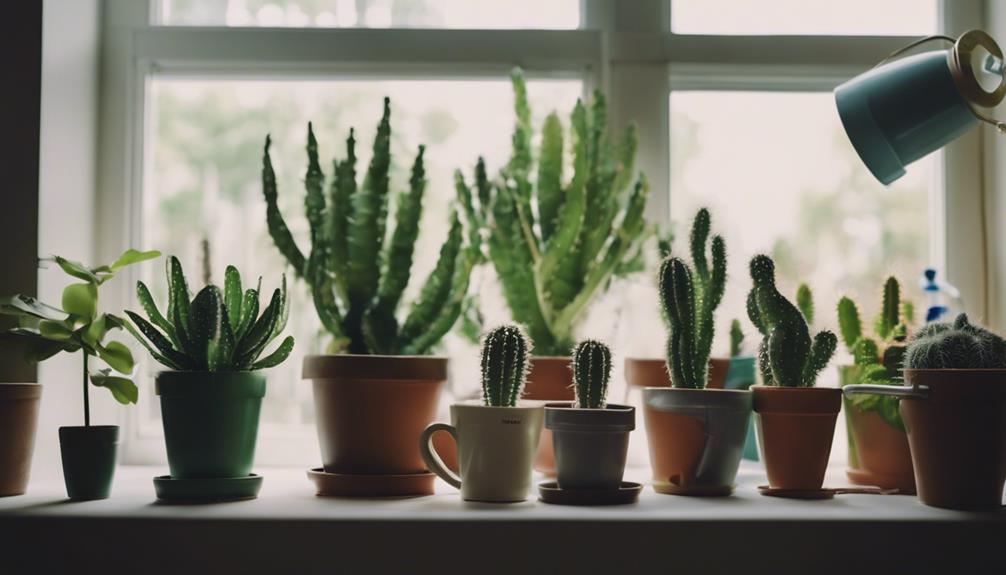Big plants such as Fiddle Leaf Figs and Monstera require proper drainage in order to thrive. Without it, they are at risk of being in waterlogged soil and developing root rot, which can impede their growth. Opting for pots with drainage holes allows excess water to drain out, preventing soil saturation. This facilitates oxygen flow to the roots and aids in the absorption of nutrients. Ensuring optimal drainage is crucial for the overall well-being of these large plants. It is important to follow their care guidelines to keep them healthy. For more information on how to care for large plants, you can refer to the plant parenting resources.
Key Takeaways
- Big plants like Fiddle Leaf Figs need proper drainage for healthy root growth.
- Drainage prevents waterlogging, root rot, and oxygen deprivation in large plants.
- Choose pots with drainage holes 2-4 inches larger than the root ball.
- Well-draining soil is crucial for nutrient absorption and plant vitality in big plants.
- Adequate drainage supports stability, growth, and overall health of large plants.
Importance of Proper Drainage
Proper drainage is essential for healthy plant growth, preventing root rot and ensuring ideal nutrient absorption. Root rot, a common issue caused by waterlogged soil, occurs when excess water suffocates the roots, hindering their ability to absorb nutrients effectively.
Drainage holes in pots play a key role in preventing water from pooling at the bottom, allowing the excess water to escape. This process not only prevents root rot but also promotes healthy soil aeration, critical for root health and overall plant vitality.
Without adequate drainage, plants may experience stress due to overwatering, leading to potential growth issues. Choosing pots with proper drainage is crucial as it helps maintain the right moisture levels, reducing the risk of waterlogging and subsequent root problems.
Understanding Waterlogging Risks
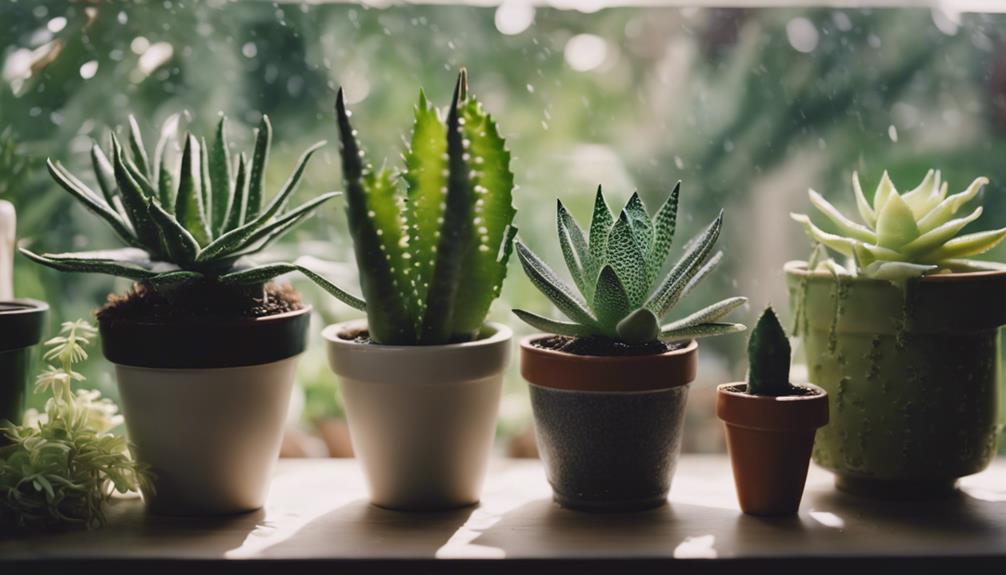
Excess water accumulation in the soil poses risks of waterlogging, which can harm plant roots and impede nutrient absorption. When waterlogging occurs, the excess water limits the oxygen available to plant roots, leading to suffocation and hindering the uptake of essential nutrients.
Prolonged waterlogging not only suffocates roots but also creates an environment conducive to root rot, further endangering plant health. Recognizing the signs of waterlogging, such as wilting, yellowing leaves, and stunted growth, is important for prompt intervention to prevent irreversible damage or plant death.
To mitigate the risks of waterlogging, ensuring proper drainage in plant pots is essential. By selecting pots with drainage holes and using well-draining potting mix, excess water can escape, maintaining a healthy root environment.
Preventing Root Rot
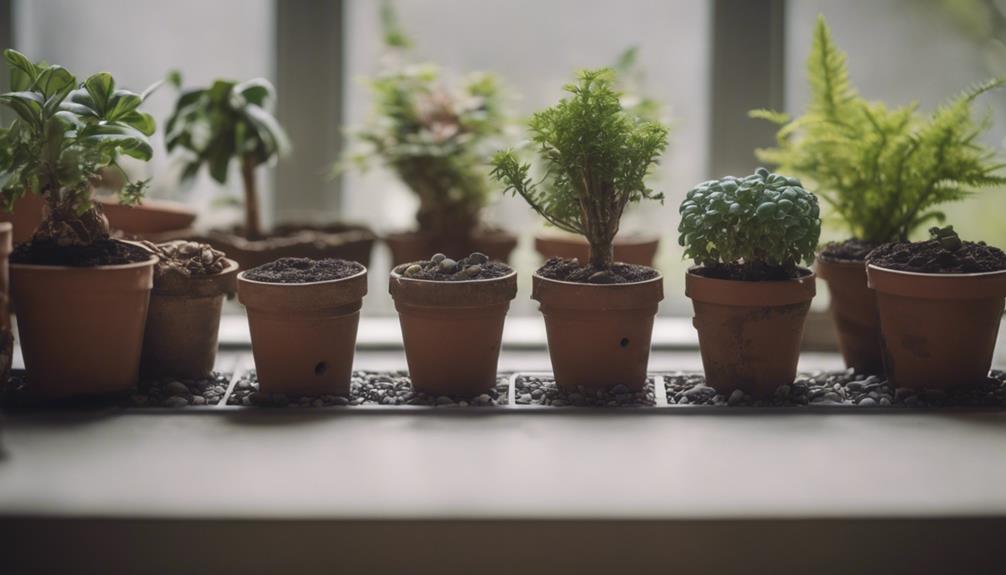
Root rot can be a real headache for plant parents, caused by either too much water or poor drainage. Keep an eye out for yellowing leaves, wilting, or a funky smell coming from the soil – these could be signs of trouble brewing beneath the surface.
To prevent root rot, make sure your pots have proper drainage holes to let excess water escape and keep those roots healthy and happy.
Root Rot Causes
Preventing root rot involves ensuring pots have adequate drainage to avoid trapping water around plant roots. Root rot, a fungal disease, thrives in overly wet soil, suffocating plant roots and causing decay. The key culprit behind root rot is the lack of proper drainage in pots, leading to water accumulation that spells trouble for plant health.
When roots are constantly submerged, they become susceptible to rot, hindering the plant's ability to absorb nutrients and water efficiently. To combat this issue, it's essential to opt for pots with drainage holes and utilize well-draining soil that allows excess water to escape. Additionally, monitoring watering habits and avoiding overwatering can greatly reduce the risk of root rot.
Signs to Watch
We can easily identify signs of root rot by observing wilting, yellowing leaves, or detecting a foul odor. These indicators suggest that excess water is suffocating the plant's roots due to inadequate drainage.
When pots lack proper drainage holes, water can pool at the bottom, creating a soggy environment perfect for root rot to thrive. To guarantee this issue doesn't occur, make sure your plant's container allows excess water to escape freely through drainage holes.
Proper Drainage Importance
Observing signs of root rot alerts us to the importance of proper drainage in potting plants to maintain their health and growth. Drainage plays a critical role in preventing root rot, a common issue that arises from waterlogged soil.
When pots lack proper drainage holes, excess water accumulates around the plant roots, leading to oxygen deprivation. This deprivation can cause roots to suffocate and ultimately decline, impacting the plant's ability to absorb essential nutrients.
Root rot occurs when roots are consistently exposed to excess moisture, resulting in their decay and compromising the plant's overall health.
Well-Draining Soil Essentials
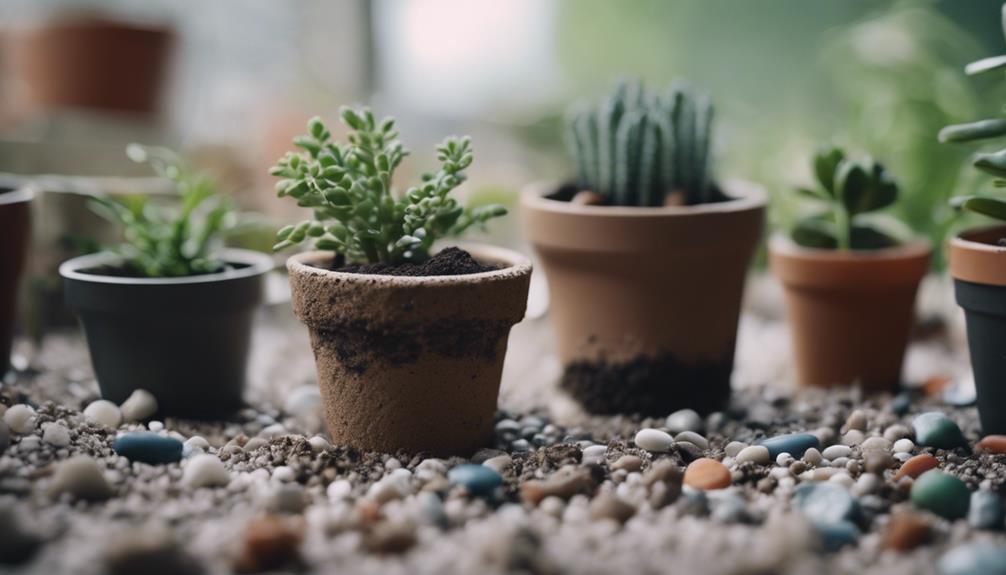
Ensuring proper drainage is essential for healthy plant growth and root development. To achieve this, using a well-draining potting mix is vital. This special mix allows excess water to flow out of the soil, preventing waterlogging that can lead to root rot. By maintaining good drainage, oxygen levels in the soil remain ideal, supporting healthy root growth and nutrient uptake. Additionally, proper drainage helps prevent the accumulation of salts that can harm plant roots over time.
While sandy soil naturally provides good drainage, clay soils can be improved by incorporating organic matter. For potted plants, selecting a quality potting mix labeled as well-draining is essential. These mixes are specifically designed to create the ideal environment for plant roots to thrive.
Pot Selection for Big Plants
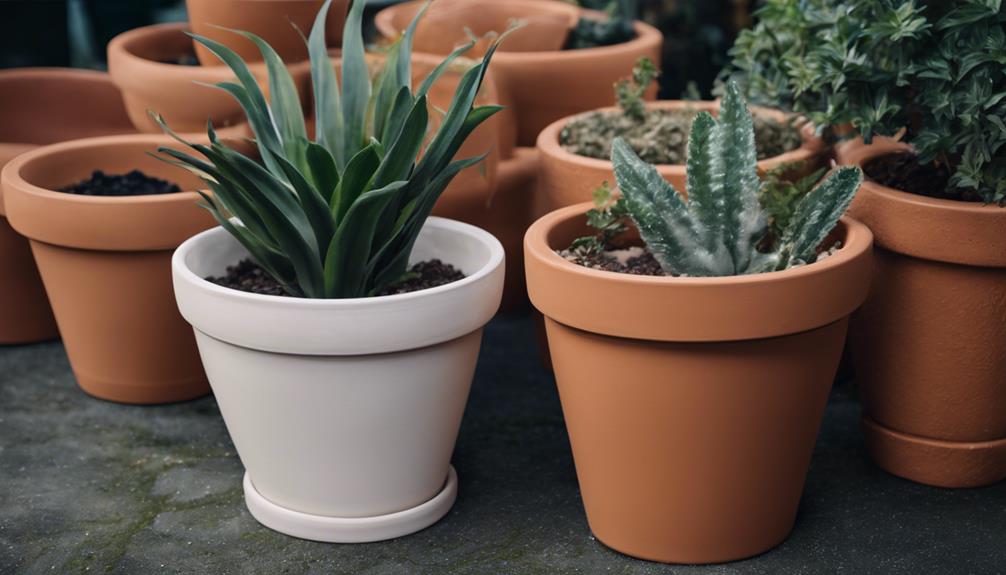
Selecting the right pot for your big plants is essential for their health and growth. When choosing a pot, opt for one that is 2-4 inches larger in diameter than the root ball of your plant. This extra space allows the roots to spread comfortably and promotes proper growth. Additionally, look for a container with drainage holes to prevent waterlogging and root rot, ensuring your plant's well-being.
Consider the table below for a quick overview of pot selection tips for big plants:
| Pot Selection Tips | Description | Importance |
|---|---|---|
| Size | 2-4 inches larger than root ball | Promotes root growth |
| Drainage | Holes to prevent waterlogging | Prevents root rot |
| Stability | Stable and heavy enough | Supports plant's weight |
Significance of Drainage Holes
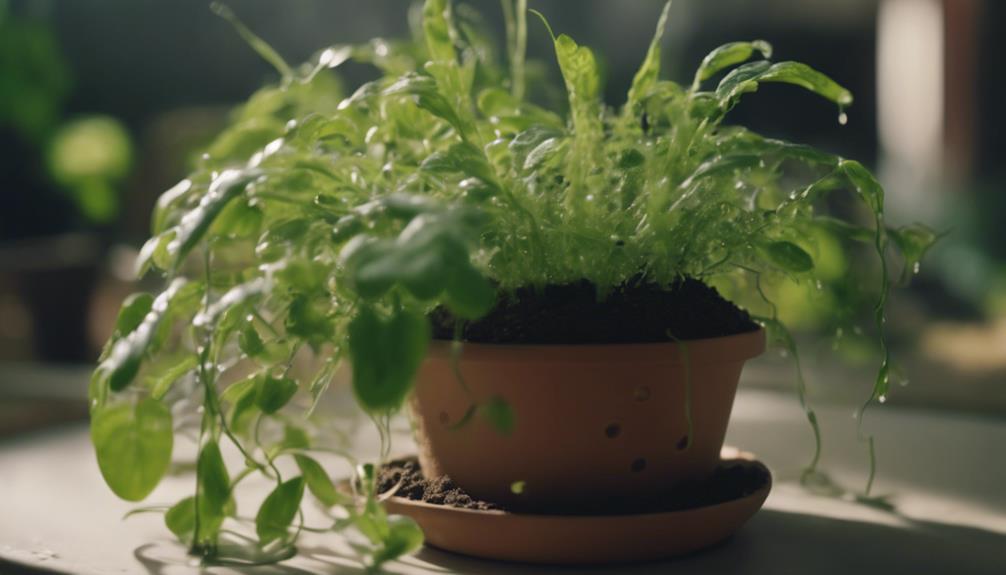
Having proper drainage holes in your plant pots is essential for maintaining healthy roots.
Without adequate drainage, water can accumulate at the bottom, leading to issues like root rot and waterlogged soil.
Ensuring good drainage promotes ideal plant growth and vitality by preventing these waterlogging problems.
Drainage for Healthy Roots
Drainage holes in pots play an essential role in maintaining healthy roots by preventing water accumulation and ensuring proper oxygen flow. These holes are like tiny lifelines for our green friends, meeting their plant needs for a well-balanced environment.
By allowing excess water to escape, drainage holes help prevent the dreaded root rot and fungal diseases that can wreak havoc on plant roots. Oxygen is a must-have for roots to thrive, aiding in essential functions like nutrient absorption and overall growth.
When roots are suffocated by waterlogged soil, they struggle to access the resources they need, resulting in stunted growth and unhappy plants. To keep our leafy companions in top shape, it's vital to select pots with adequate drainage that align with the specific needs of each plant species.
Prevent Waterlogging Issues
To maintain healthy roots and prevent waterlogging issues, the presence of drainage holes in pots is essential. Drainage holes play a crucial role in allowing excess water to escape from the soil, preventing root rot and other water-related problems.
Without proper drainage, stagnant water can accumulate at the bottom of the pot, suffocating the roots and causing stress to the plant. This lack of drainage can disrupt the balance of soil moisture levels, hindering ideal plant growth.
Plants that remain in waterlogged conditions due to the absence of drainage holes are more susceptible to developing fungal diseases and root rot, leading to a decline in plant health. By ensuring that pots have adequate drainage, either through existing holes or by adding them when needed, plant parents can greatly improve plant well-being and prevent detrimental water-related issues.
Enhance Plant Growth
For us plant parents, ensuring our plants have proper drainage holes in their pots is essential for enhancing their growth and overall health. Adequate drainage is a fundamental need for plants to thrive.
When pots lack drainage holes, water can accumulate at the bottom, leading to waterlogged soil. This can result in root rot, hindering the plant's ability to absorb nutrients and grow effectively. Additionally, stagnant water can cause oxygen deprivation to the roots, further impeding the plant's growth.
By providing adequate drainage, excess water can escape, preventing salt buildup in the soil that could harm the plant over time.
Plants with good drainage aren't only less susceptible to fungal diseases but also to pests that thrive in damp conditions. Proper drainage promotes healthy root development and overall plant vigor by maintaining ideal moisture levels.
Ensuring Excess Water Escape
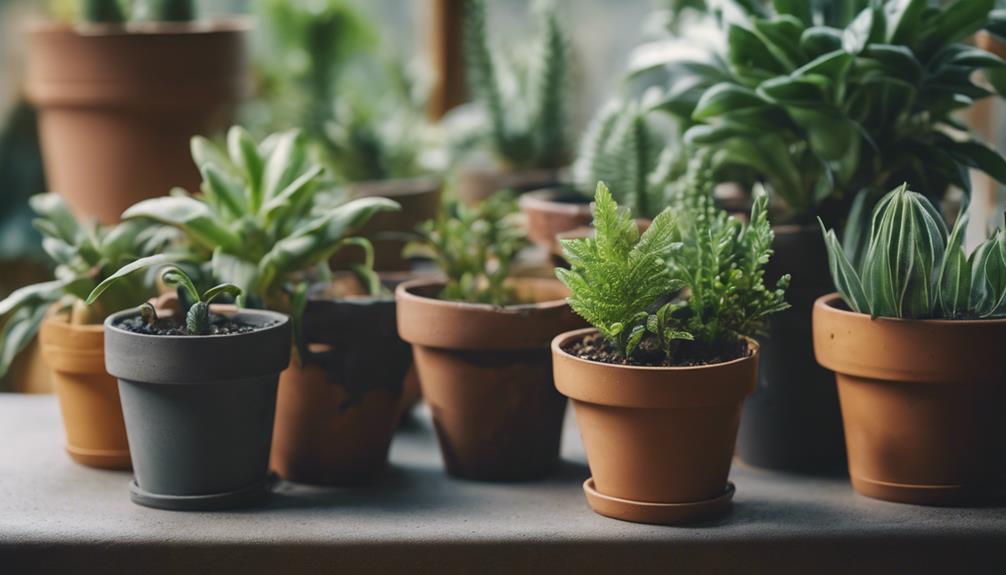
Ensuring excess water escapes from plant pots is essential to prevent root rot and promote healthy growth. Proper drainage is pivotal for maintaining an indoor oasis. Without adequate drainage, water can accumulate at the bottom of the pot, suffocating the roots and leading to issues like poor growth and root rot. To prevent these problems, it's important to choose pots with drainage holes or add a layer of rocks at the bottom of the pot to improve water flow.
Drainage holes allow excess water to escape, ensuring that plants don't sit in standing water. This process promotes oxygen flow to the roots, supporting overall plant vitality. By allowing water to drain effectively, you can help your plants thrive and prevent potential health issues caused by waterlogging.
Thriving Through Optimal Health
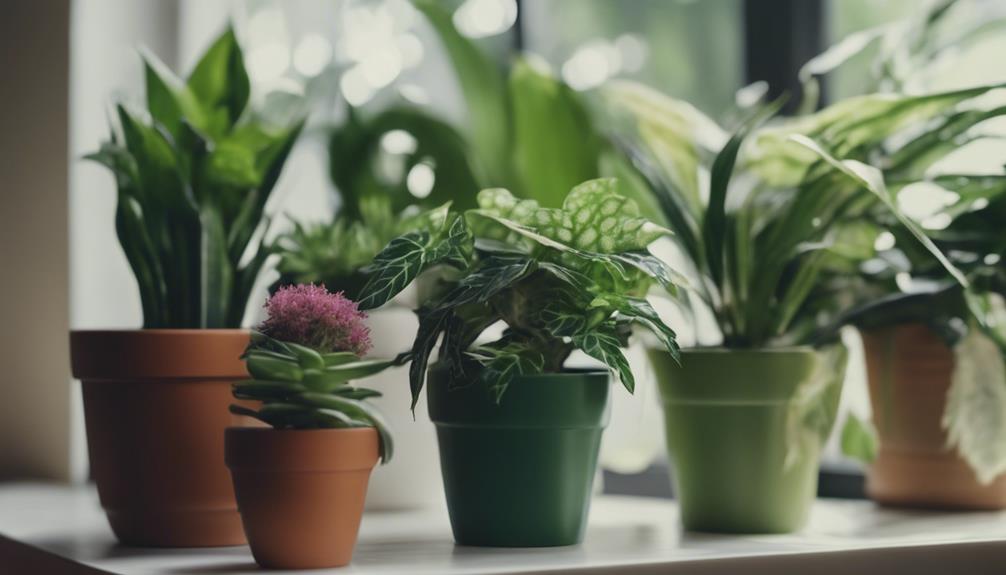
We prioritize the health of our plants by making sure they thrive through best care practices. Understanding our plant needs is essential for their peak health. Different plants have varying requirements when it comes to water, light, and nutrients. By catering to these needs, we can create an environment where our plants flourish.
Here's a breakdown of some essential plant needs:
| Water | Light | Nutrients |
|---|---|---|
| Consistent moisture | Right amount of sun | Balanced fertilization |
| Avoid overwatering | Rotate for even light exposure | Proper feeding schedule |
| Check soil moisture regularly | Monitor for any signs of light deficiency | Consider plant-specific fertilizer |
Meeting these plant needs ensures that they receive the care necessary for robust growth and vitality. By paying attention to water, light, and nutrient requirements, we can help our plants thrive and enhance their overall health and well-being.
Big Plant Care Guidelines
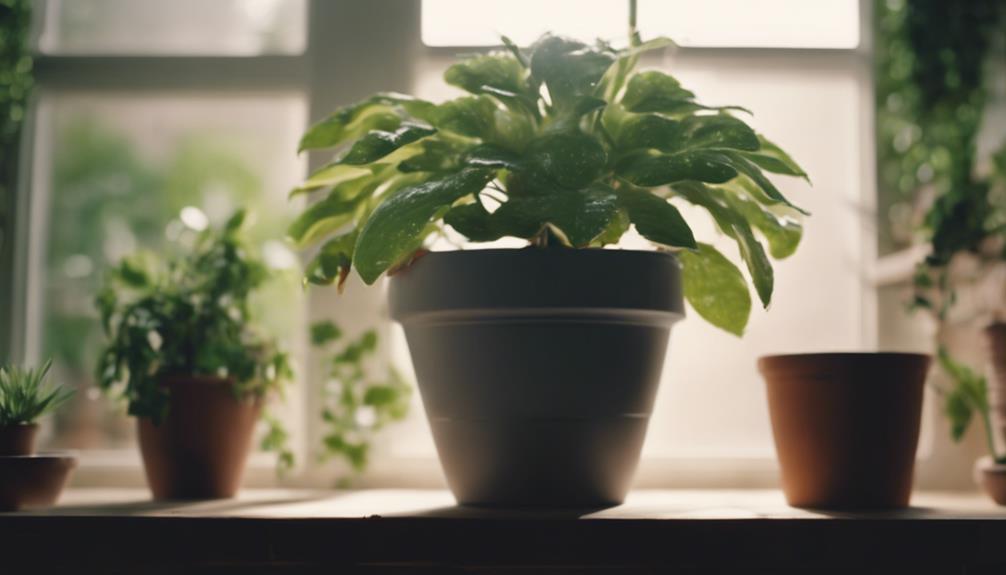
Proper drainage is essential for the care of big plants such as Fiddle Leaf Figs and Monstera. When it comes to plant parenthood, ensuring your large plant has a pot with adequate drainage is vital.
Without proper drainage, these big plants can suffer from waterlogged roots, which may lead to root rot and ultimately harm the plant's health. To avoid such issues, it's important to choose containers with drainage holes that allow excess water to escape, preventing water from pooling at the bottom.
Plants in pots without drainage can experience oxygen deprivation, impacting their nutrient absorption and overall well-being. By maintaining proper drainage in your big plant's pot, you help regulate soil moisture levels, reducing the risk of water-related problems.
Frequently Asked Questions
Do Plants Need Water Drainage?
Yes, plants need proper water drainage for healthy growth. Without it, roots can suffocate, leading to root rot and nutrient deficiencies. Drainage holes in pots help excess water escape, maintaining the right moisture balance.
Lack of drainage can stunt growth, cause yellowing leaves, and overall decline in plant health. Select pots with drainage holes to promote healthy root development and overall plant vitality. Remember, drainage is crucial for happy plants!
How to Ensure Proper Drainage in Potted Plants?
To guarantee proper drainage in potted plants, we recommend using pots with drainage holes. These holes allow excess water to escape, preventing waterlogged soil and root rot.
Opting for well-draining soil and pots with adequate drainage promotes healthy root development and overall plant growth. Remember, oxygen flow to the roots is vital for your plant's well-being.
What Happens to Plants With Poor Drainage?
When plants lack proper drainage, they face serious issues. Waterlogged soil can lead to root suffocation and rot, making plants susceptible to fungal diseases and root decay.
Without enough oxygen, nutrient absorption is hindered, impacting plant growth. Pots without drainage can drown roots, causing wilting and death.
Adequate drainage is essential for preventing water-related stress, fostering healthy roots, and ensuring overall plant health.
Do Rocks Help With Drainage in Pots?
Rocks in pots don't actually boost drainage. In fact, they can create water buildup that harms plants. It's better to use well-draining soil or add horticultural charcoal for healthier roots.
Skip the rocks to prevent root rot and waterlogging. Opt for pots with drainage holes and proper soil to help plants thrive.
Do Massive Indoor Plants Require Special Drainage Needs?
Massive indoor plants like the fiddle leaf fig and bird of paradise are among the best indoor plant picks for adding a wow factor to any space. While they do require special drainage needs, such as a well-draining potting mix and a planter with proper drainage holes, they are fairly easy to care for.
Conclusion
To sum up, remember: big plants need big love, but not big puddles. Drainage is key to keeping your leafy friends happy and healthy.
So, don't drown them in water – give them room to breathe and grow. With the right soil, pots, and care, your plants will thrive and thank you with their vibrant beauty.
Happy gardening!
